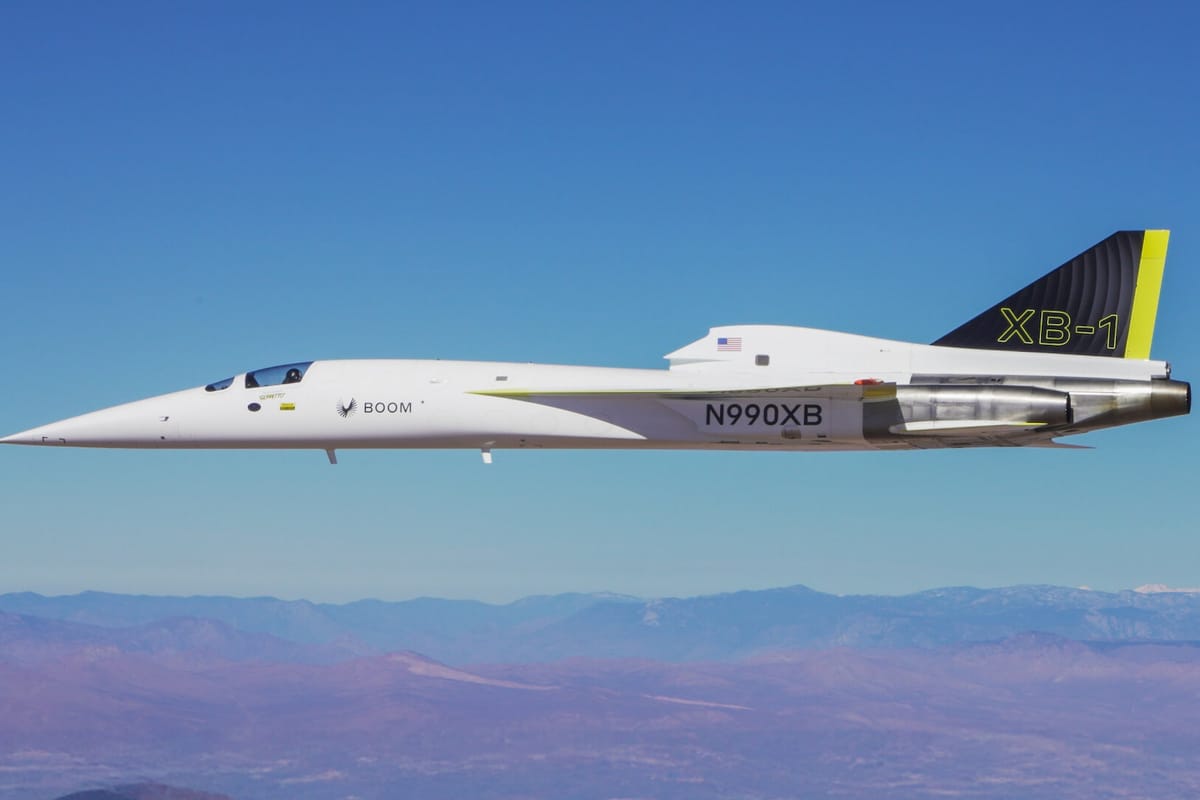

The Birth of Boom Supersonic
Boom Supersonic, founded in 2014 by Blake Scholl, embarked on a mission to revolutionize air travel by bringing back supersonic passenger flights. The company's vision was to make supersonic travel accessible, sustainable, and economically viable. Boom's journey began with the ambitious goal of developing aircraft that could fly at twice the speed of sound, drastically reducing travel times across the globe.
Early Developments and Challenges
In its early years, Boom faced numerous challenges typical of a startup in the highly regulated and capital-intensive aerospace industry. The company had to navigate complex technical hurdles, regulatory landscapes, and funding requirements. Despite these obstacles, Boom's innovative approach and commitment to sustainability attracted attention from investors and potential airline customers.
The XB-1 Demonstrator
A significant milestone in Boom's history was the development of the XB-1, a one-third scale demonstrator for Boom's future supersonic airliner. The XB-1, nicknamed 'Baby Boom,' was designed to validate key technologies and aerodynamics for supersonic flight. Its development phase showcased Boom's ability to innovate, utilizing advanced materials like carbon fiber composites and implementing cutting-edge design techniques.
Breaking the Sound Barrier
On January 28, 2025, Boom Supersonic achieved a historic feat when the XB-1 broke the sound barrier during a test flight at the Mojave Air & Space Port in California. This accomplishment marked the first time an independently developed civil supersonic jet reached supersonic speeds, a milestone previously achieved only by government-backed projects. The XB-1 reached Mach 1.122 (approximately 750 mph) at an altitude of 35,290 feet, piloted by Boom's Chief Test Pilot, Tristan 'Geppetto' Brandenburg.
The Overture: Boom's Supersonic Airliner
Building on the success of the XB-1, Boom's primary focus is the development of Overture, its flagship supersonic airliner. Designed to carry 65 to 88 passengers, Overture aims to fly at Mach 1.7 over water and just under Mach 1 over land, potentially halving many flight times. The aircraft is being developed with a strong emphasis on sustainability, capable of running on 100% sustainable aviation fuel (SAF).
Partnerships and Orders
Boom's progress has not gone unnoticed in the aviation industry. The company has secured significant partnerships and orders from major airlines. United Airlines placed an order for 15 Overture aircraft, with options for an additional 35. American Airlines followed suit with an order for 20 Overture aircraft and options for 40 more. These commitments from established carriers demonstrate the industry's confidence in Boom's vision and technology.
The Superfactory
In June 2024, Boom celebrated the completion of its Overture Superfactory in North Carolina. This state-of-the-art facility, spanning 62 acres, is set to be the first supersonic airliner factory in the United States. The Superfactory will not only manufacture Overture aircraft but also house testing facilities and a customer delivery center, marking a significant investment in American aerospace manufacturing capabilities.
Technological Innovations
Boom's approach to supersonic travel incorporates several technological innovations. The company is developing its own supersonic engine, Symphony, optimized for high-speed flight. Overture's design includes advanced aerodynamics, lightweight materials, and a focus on noise reduction to address concerns about sonic booms. The aircraft's cockpit will feature Honeywell's Anthem avionics suite and an augmented reality vision system to enhance safety and pilot awareness.
Challenges and Criticisms
Despite its achievements, Boom faces ongoing challenges. Critics point to the high fuel consumption of supersonic flight, with estimates suggesting Overture could burn two to three times more fuel per passenger than subsonic first-class travel. The company must also navigate strict regulations regarding supersonic flight over land and address concerns about the environmental impact of high-altitude emissions.
Impact on US Competitiveness
Boom Supersonic's efforts are significantly contributing to US competitiveness in the global aerospace industry. As the first American company to independently develop a civil supersonic aircraft, Boom is positioning the United States at the forefront of high-speed aviation technology. The establishment of the Overture Superfactory in North Carolina is creating high-skilled jobs and fostering a new hub for aerospace innovation.
Furthermore, Boom's success could have ripple effects across the US economy. A revival of supersonic travel could boost tourism, facilitate international business, and strengthen America's position in the global transportation sector. The technologies developed by Boom may also find applications in other industries, driving innovation beyond aviation.
Future Prospects
Looking ahead, Boom aims to fly Overture by 2026 and achieve FAA certification by 2029. If successful, this timeline would enable deliveries to begin to airlines like United and American shortly after. The company's long-term vision extends beyond Overture, with plans to continue innovating and potentially developing even faster and more efficient aircraft in the future.
Future of Air Travel
Boom Supersonic's journey from a startup to a pioneer in supersonic aviation represents a significant chapter in aerospace history. By pushing the boundaries of speed, sustainability, and innovation, Boom is not only working to transform air travel but also reinforcing America's leadership in aviation technology. As the company progresses towards its goal of making supersonic flight a reality for commercial passengers, it continues to face challenges but remains a beacon of American ingenuity and ambition in the skies.
The success of Boom Supersonic could usher in a new era of global connectivity, with potential far-reaching impacts on business, culture, and international relations. As the company moves forward, it carries with it the hopes of reviving the dream of supersonic travel and solidifying the United States' position at the cutting edge of aerospace innovation.
Dues are $12 per year. Member benefits:
✅ Ad-Free Website Viewing
✅ Advocacy for Republican Seniors
✅ 120+ Senior Discounts
✅ Member Only Newsletters